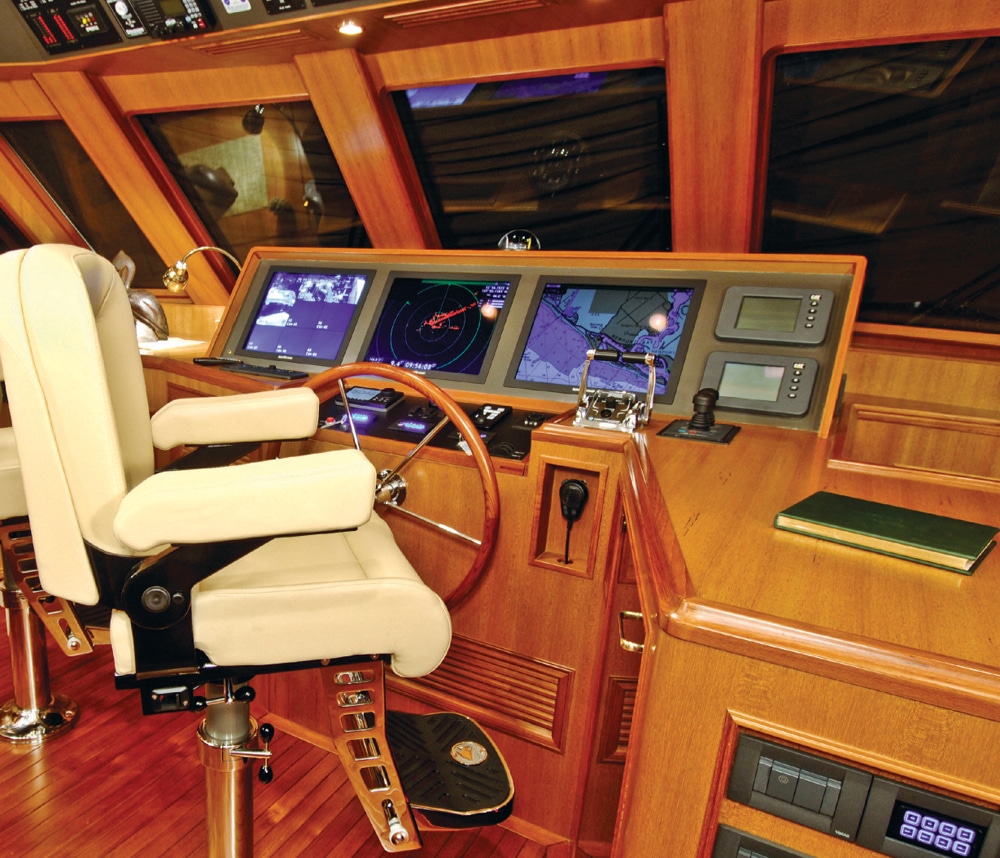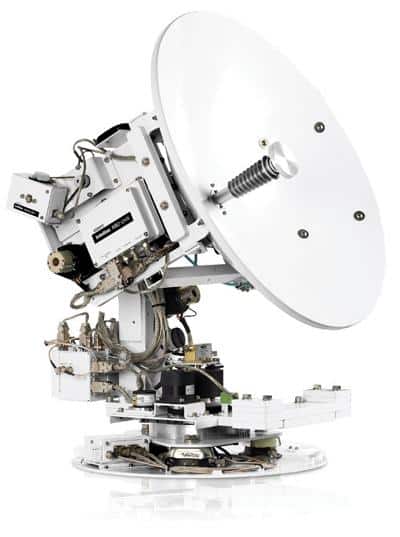
Helm-Side Decisions
Few experiences are as nerve-wracking as entering a challenging harbor at night, in weather, sans local knowledge. For millennia, this scenario spelled doom for countless seamen, but today’s advanced helm electronics have greatly softened this experience. However, while technology is superb at providing critical information, determining what gear to have aboard during testy situations is a commitment decision.
As with every important decision, selecting a new helm is an involved process. “These days, customers can make electronics purchases well ahead of their delivery date or refit,” says Larry Schildwachter of Seattle’s Emerald Harbor Marine (www.emeraldharbormarine.com). “It can be a one- to three-year process to finalize a helm.” The best way to begin helm hunting is by first shopping for a knowledgeable and experienced dealer/installer — someone whom you trust and with whom you can work. Next, attend a boat show with your dealer to get a market overview before carefully working up a master list. Then, once populated, use future shows to capitalize on boat-show specials. “Attending the big boat shows is useful because you can visit the factory booth and get the product walk-through from the experts,” Schildwachter says. “And owners can save money on gear.”
In addition to offering deals, shows can provide an opportunity for the dealer to learn more about you and your cruising goals in a less formal setting than an office — critical information that he will use when helping you select the best tools for your goals. “Boat shows are a great opportunity to walk the floor with a customer and see all the gear, especially for green customers who don’t have a brand preference,” says Fred Gilbert at Seattle’s S3 Maritime (www.s3maritime.com). “It’s a chance to gain insight into their cruising plans. Then [afterwards], we can nail down their list.”
Schildwachter and Gilbert both suggest that a good dealer is brand-blind and will instead spend time working with customers to identify their needs, and to help them build a helm that’s suited for their cruising agenda. “It’s important,” Schildwachter says, “that their purchase order matches their long-term goals.” Likewise, Gilbert points to the importance of working directly with an owner — rather than a captain — on the purchase order. “If the captain leaves, the gear is still there,” he says.
After you’ve attended a show and have a good understanding of what’s available, it’s time to start making broad-stroke decisions. To focus your efforts, consider where you most enjoy spending time while aboard. If you’re happiest at the main helm, a great strategy is to concentrate the electronics suite here, while limiting the flying bridge to a more basic package, or vice versa.
Technology and durability are the next big-picture areas to consider. Here, you often must decide between buying cutting-edge technology and selecting sea-proven equipment. “I use a combination of cutting-edge and tried-and-true gear,” Gilbert says. “I don’t want to steer someone toward gear that I’m not confident in. Usability is huge. It’s great if something is loaded with bells and whistles, but if an owner can’t use it, it’s no good.” Schildwachter concurs, but errs even more on the conservative side, commenting that he “likes bulletproof gear, rather than being the guinea pig.”
Today’s standard helm electronics include radar, a chart plotter, a sounder, an autopilot, GPS and Class-B AIS. Schildwachter says the real difference between electronics packages for coastal cruisers and blue-water yachts is their communication equipment. Both will likely carry at least one DSC-enabled VHF (Gilbert recommends carrying two VHFs on board, one with a short-range antenna and another for long-range use) and cell-phone-signal boosters for near-shore use. However, owners who venture offshore will also want to access e-mail, surf the Web, download GRIB files and make phone calls, and this necessitates a satellite-communications dome. Coastal yachtsmen can likely use a simpler system that utilizes land-based Wi-Fi hot spots and cell-phone towers. Schildwachter says many serious cruisers carry two domes, one for communication (Internet, phone, fax and weather/GRIB files) and the other for receiving TV signals. Bigger satcom domes can get data faster and in worse conditions because they bring in more signal; more powerful TV domes offer more range offshore because TV signals are aimed at land. (Caveat emptor: Communications technology is evolving faster than other electronics, so hold off on this purchase for as long as possible, especially if you’re contracting for a new build.)

Schildwachter says that displays and multifunction displays (MFDs) are the first pieces of equipment to select when building a new helm, because this technology is fairly stable. Here, the question comes down to screen size, visibility, NIT (brightness-measurement units) and resolution, as well as price and intended usage. While an MFD offers the benefit of easy plug-and-play use — and some also offer a rich, bright picture — it doesn’t offer the same physical size, nor does an MFD offer the same flexible inputs (cameras, TV, radar); also, the separation of the keyboard from the screen usually renders better ergonomics. The real benefit of high-end monitors, however, is for blue-water cruisers who are continually cruising in all weather and soundings; coastal cruisers can likely throttle back to either a single monitor/black box and an MFD, or perhaps to multiple MFDs. Boat shows provide comparisons, but Schildwachter recommends going out on the water and seeing the real-world differences between MFDs and displays, as well as the differences between individual brands.
Both offshore and coastal cruisers will need a high-quality autopilot that can handle the vessel in all conditions. Skimping here is a serious mistake. “I’d put in a really nice autopilot and an MFD — rather than displays and black boxes — if money were an issue,” Schildwachter says. The key to a good system, he says, is appropriately sized, high-quality hydraulic pumps. For owners contemplating a refit, Gilbert advises that good pumps are one of the few components that can be successfully “recycled” into a new helm during a refit project.
Once these big-picture decisions are made, the question then turns to secondary equipment that’s great to have aboard but that isn’t a prerequisite for safe navigating. This list includes anemometers, cameras, flybridge repeaters, subscription satellite weather, low-light and/or thermal night-vision capabilities, cameras, a fish finder, side- and forward-looking sonar and networked engine- and systems-monitoring equipment. Determining which of these items you want is a personal decision that should be guided by your cruising agenda, as well as your budget.
The final step in building a new helm is to ensure a solid sea-trial process. Both Gilbert and Schildwachter are adamant about the necessity of multiple sea trials (one at delivery, the other a few weeks later) to ensure that their clients are comfortable with their new equipment. Lastly, Gilbert and Schildwachter advise that the dealer should provide a detailed schematic or CAD drawings of each piece of gear, its wire run, its power requirements and other germane information. These drawings enable technicians who are unfamiliar with your yacht to provide high-quality service should a problem arise while you’re away from home waters.









